The volatile weather patterns of recent years have shone a practical spotlight on the importance of being prepared for unexpected downpours, particularly in professions such as construction where outdoor exposure is inevitable. Investing in quality rain gear is no longer just about comfort - it's an essential safety measure for the hardy construction worker battling the elements. Crafting this first line of defense that stands between the outdoor professional and Mother Nature requires an understanding of the indispensable role quality rain gear plays, how to discern its quality, and the effective ways of maintaining its durability. As we move through this article, we'll offer pointers on choosing the right gear and explain how spending more initially can reap significant savings in the long run. Whether you're an employer seeking to equip your team with the best protective wear, or a construction worker aiming to gear up for the seasons ahead, this comprehensive guide is here to help you make an informed decision. This article’s aim is to empower every reader with the knowledge of not just surviving, but thriving under the grey skies, unhindered by the rain.
Why Invest in Quality Rain Gear
When the sky bursts open with a cascade of rain, how equipped are you to handle it? Do you possess the right tools to ensure that you remain dry, safe, and efficient throughout the day? Simply put, are you investing in quality rain gear? This question is more critical than you might think. Today, we'll dive into the importance of quality rain gear, ensuring both your comfort and safety during those rainy days. From protection against harsh weather, enhancing work efficiency, to safeguarding health, the advantages are innumerable.
Protection against Harsh Weather
For starters, high-quality rain gear provides impenetrable protection against harsh weather. Usually, these protective essentials are designed using waterproof materials like Gore-Tex or Tyvek. They repel water at the surface, shielding your body and other clothing layers from getting soaked in rainwater.
Apart from protecting against rain, a well-designed rain outfit can also guard against wind, adding an extra layer of warmth during chilly weather conditions.
Outlined below are the primary components of quality rain gear:
- Rain Jacket: This is the upper body garment designed to keep your torso, arms, and head dry. The presence of a hood can effectively protect your head and face against rain droplets.
- Rain Pants: These are the lower body garments that protect your legs from getting wet. They are usually paired with rain jackets for complete protection.
- Rain Boots: These are waterproof boots designed to keep your feet dry despite the numerous puddles you might encounter.
Enhancing Work Efficiency
The significance of rain gear extends far beyond just staying dry; it can greatly impact your work efficiency. Imagine being soaked while trying to focus on your work; it's far from ideal. Whether you work in construction, delivery services, outdoor events, or any profession requiring you to brave the rain, competent rain gear ensures you can perform at your best, regardless of the weather.
In addition to this, quality rain gear often incorporates features that enhance comfort and mobility, which in turn enhances work productivity. These features may include breathable fabrics that prevent overheating, lighter weight for easy movement, and adjustable components for a better fit.
Health and Safety Concerns
Investing in quality rain gear also plays a critical role in ensuring health and safety, especially for those exposed to the outdoors. Constant exposure to cold and damp conditions can lead to numerous health issues like hypothermia or pneumonia.
Furthermore, quality rain gear is often equipped with safety features like reflective strips for those who might need to work in low-light conditions. These reflective accents increase visibility, thus reducing the risk of accidents.
So, how about it? Are you ready to invest in quality rain gear? Remember, staying dry and safe should always be a top priority, and the right gear can make all the difference. The sky might be falling, but with the proper outfit, you can consistently rise above!
Determining Quality in Rain Gear
For outdoor enthusiasts, seasoned campers, or anyone living in climates with plenty of rainfall, owning quality rain gear is a non-negotiable must. To ensure you stay dry and comfortable, a top-quality, efficient piece of rain gear is crucial. But how do we filter through the marketing fluff to identify genuinely effective rain gear options? This article will guide you through the essential features to look out for.
Material
Rain gear material plays a vital role in its efficiency. It has a direct impact on your clothing's ability to ward off water and maintain breathability. Popular materials used in quality rain gear include:
- Nylon
- Polyester
- Gore-Tex
Nylon, a heavier material, is known for its excellent durability and resistance to wear and tear. Polyester, although lighter than Nylon, also provides strong resistance to environmental elements. Gore-Tex, revered in the industry, strikes the perfect balance between water resistance and breathability.
Construction
The construction quality can make or break a piece of rain gear. Good-quality rain gear will have reinforced areas that are prone to wear, such as the elbows and knees. Additionally, keep an eye out for the following features:
- Double-stitched seams: These add durability and waterproofing
- Handwarmer pockets: Ensuring comfort in colder weather
- Articulated patterns: Promote ease of movement
Seams and Fastenings
Well-made gear will feature sealed seams to stop water leakage. The procedure can sometimes leave some areas less durable, hence the need for reinforced seams on higher-quality rain gear. For fastenings, seek out gear with water-repellent zips and storm flaps to enhance waterproofing.
Comfort and Breathability
Ironically, the same properties which make rain gear waterproof can also make them uncomfortably sweaty and clammy. High-quality rain gear carefully considers the balance between waterproofing and breathability. Seek out gear that wicks sweat away from your body and allows proper ventilation. Comfort-enhancing features to consider are:
- Vents at high-sweat areas (underarms and back)
- Adjustable cuffs and hems
- A flexible, mobile fit that doesn't restrict movement
Remember, the most telling way to determine the quality of rain gear is to test it out. Even the most expensive gear can underperform in actual usage. So, make sure to read reviews, try on different choices, and purchase rain gear that suits your personal preference and needs.
Sustaining Rain Gear Durability
As a lover of outdoor adventures, you definitely understand the significance of weather-proof attire. But how often do you think about something as fundamental as the longevity of your rain gear? Over time, factors like improper care or natural wear and tear can reduce effectiveness, leaving you susceptible to weather's whims. Let's delve into tips on sustaining that well-needed durability of your rain gear.
Proper Cleaning and Storage
A point that's sadly often overlooked is cleanliness. Your rain gear might seem tough but like any apparel, it appreciates tender love and care. Here's where proper cleaning and storage can be your absolute winning move:
- Gently does it: Use a mild soap or special gear cleaner, preferably non-detergent based, to clean your rain gear.
- Avoid high heat: Be sure to air dry or use a tumble dryer on low heat. High temperatures can be destructive, leading to peels and cracks.
- Roll rather than fold: Folding can stress the material whereas loosely rolling avoids crease lines and wrinkling.
- Store in dry, cool spaces: Ultraviolet rays and moisture can reduce the lifespan of your rain gear. Store in a dry, cool place.
Suffice to say, proper storage and correct cleaning are the two musketeers of gear longevity.
Routine Inspection
Closely related to cleaning is the practice of routine inspection. This mostly seems like common sense right? Yet it's so often neglected, leading to minor issues escalating into major concerns. Here's what to watch out for:
- Check for wear in high abrasion areas like around the cuffs or side panels.
- Look out for signs of delamination, which is the separation of layers in your gear making it less weatherproof.
Being vigilant and thorough in your inspection helps maintain your gear's integrity and utility.
Repairing Damages Early
As the saying goes, "a stitch in time saves nine". And it rings especially true here. No matter how careful you are with your gear, it's likely to show signs of wear and tear over time: that's just the reality of rugged outdoor use. Identifying these early and repairing immediately can save you further degradation and, quite importantly, a hefty replacement cost.
There are repair kits available that match a variety of materials and types of damage. The instructions are generally straightforward, making the task easy even for those not naturally DIY-inclined. Remember, it's not just about fixing apparent issues, but also reinforcing areas prone to damages.
In sum, don't let the prospect of maintaining your gear dampen your journey. A little extra attention to cleaning, regular inspections, and prompt repairs can keep you comfortably shielded from the elements throughout your wild adventures.
Choosing the Right Rain Gear for Construction Workers
Rainy weather doesn't have to be a downer for construction workers. With proper preparation and the right rain gear, you can successfully tackle any project, even when the sky decides to pour. However, selecting the right rain gear needs careful considerations to ensure it can withstand the rigors of a construction site while providing the much-needed dry warmth to the wearer. This guide will help you choose your armor against the elements based on understanding your environment, functionality, and fitting considerations.
Understanding Your Environment
The first step to choosing the right rain gear begins with assessing your working conditions. Different weather conditions warrant different types of gear.
- Cool and rainy conditions: For environments with cool and wet conditions, consider rain gear with insulated layers to provide warmth while keeping the rain out. Look for breathable materials to prevent moisture build-up.
- Warm and wet conditions: If you’re working in a region that’s warm but often wet, opt for a lighter, non-insulated option that lets air circulate. This will keep you cool and dry simultaneously, avoiding discomforts of overheating in the gear.
- Rough terrains: If you're working on rough terrains with lots of debris, look for rain gear with added durability in areas likely to wear out quickly, like knee and elbow areas.
Knowing what typical weather conditions to expect at your worksite can significantly help steer your decision towards the right gear.
Prioritizing Function Over Style
While style may be a consideration, the functionality of your rain gear is paramount. When it comes to construction work, gear effectiveness is more important than fashion statements.
Features to consider:
- Waterproof vs. Water resistant: Construction workers should prioritize waterproof clothing over merely water-resistant options. Waterproof gear will prevent water penetration even in heavy rain, keeping you dry both from the distraction and other hazardous implications.
- High visibility: Clear visibility is essential on a construction site, especially in adverse weather conditions. Choosing high-visibility rain gear not only ensures your safety but also promotes clear communication among team members.
- Durability: Choose sturdy, high-quality materials that can withstand the harsh elements and rigors of a construction site over long periods.
Fit and Size
The mantra of the right fit for construction gear is neither too tight nor too loose. To ensure maximum productivity, rain gear must provide unrestricted movement to the wearer.
- Purchase gear that's roomy enough to allow layering underneath without restricting movement.
- Consider adjustable cuffs and waistbands to provide a more custom fit.
- Opt for gear with built-in vents for increased airflow in warmer and humid conditions.
By prioritizing these three fundamental factors — understanding the environmental conditions, favoring function over style, and focusing on the fit and size of the rain gear, you'll be well-equipped to stay productive, safe, and dry at your construction site even on wet and dreary workdays.
With proper preparation and gear selection, defiant weather elements become just another aspect of the job that you're equipped to handle. Stay sheltered, stay productive.
The Cost and Value of Quality Rain Gear
As the old saying goes, "there's no such thing as bad weather, only unsuitable clothing." When it comes to braving the rain, investing in quality rain gear is of utmost importance. However, many balk at the initial cost involved. With some jackets, boots, and accessories reaching up into the three figures, it's easy to understand the hesitation. But does this initial outlay truly reflect the value these items provide? Careful analysis will reveal that quality rain gear offers a great deal of value for the price.
Initial Investment and Long-term Savings
While watching the dollars add up at checkout can make even the most seasoned shopper wince, keep in mind that quality rain gear is an investment for years to come. In the end, you're not only paying for material and design but increased longevity and durability of the product.
- High-quality jackets often feature superior waterproofing, which ensures they stand the test of time.
- Well-made boots can last for many years when cared for correctly, negating the need for frequent replacements.
- Rain accessories, such as gloves and hats, are often made with materials that withstand not just rain, but also wind and cold conditions, providing a versatile toolkit for numerous weather scenarios.
Reduced Replacement Costs
Now, think about the cost of replacement. Lower-quality, inexpensive rain gear often has a much shorter lifespan. A lower initial cost might be appealing, but the frequency with which you’ll have to replace your gear can quickly eat into those initial savings. With each replacement comes the additional hassle of research, shopping, and waiting for delivery — a time-cost that often goes overlooked.
Consideration of Health and Safety Costs
Finally, consider the potential health and safety costs of opting for cheaper, less effective rain gear. A jacket that lets in moisture might not only ruin a day in the outdoors but also put individuals at risk of hypothermia in colder temperatures. Wet feet from leaking boots can cause uncomfortable and potentially dangerous conditions like trench foot. By investing in high-quality rain gear, you're also investing in the safety and well-being of you and your loved ones.
In conclusion, the cost of quality rain gear is more than justified by the long-term savings, reduced replacement costs, and avoided health and safety risks. So, while the initial price tag may seem steep, remember this: the price per use drops significantly over time, making that initial investment a sound decision for both your wallet and well-being.
Conclusion
To wrap up, it's crucial for construction workers to invest in top-quality rain gear. Not only does it provide protection and enhance work efficiency, but it also pays itself off in the long run by reducing replacement costs. Making an informed choice considering factors such as the material, construction, seam and fastening quality, the gear's comfort, breathability, fit, and size will significantly make a difference. One of the top choices by thousands of satisfied customers is Hurricane Raingear. With its high durability and comfort, it affords workers the freedom of unrestricted movement while ensuring they stay dry regardless of the weather condition. Ensure your health, safety, and work efficiency are not compromised - choose high-quality rain gear.
Frequently Asked Questions
-
What are the factors to consider when investing in quality rain gear for construction workers?
When investing in quality rain gear for construction workers, consider factors such as material durability, waterproofing capabilities, breathability, comfort, visibility, and the availability of additional features like reinforced seams and adjustable closures.
-
Why is durability important when it comes to rain gear for construction workers?
Durability is crucial for rain gear used by construction workers as they are exposed to harsh weather conditions and rugged work environments. Durable rain gear can withstand wear and tear, ensuring long-lasting protection and cost-effectiveness.
-
What are some of the most durable materials for rain gear?
Commonly used durable materials for rain gear include Gore-Tex, Nylon, Polyester, and PVC. These materials offer excellent waterproofing capabilities and are resistant to tears and abrasions.
-
How can construction workers maintain the durability of their rain gear?
To maintain the durability of rain gear, construction workers should follow the manufacturer's care instructions, avoid excessive stretching or pulling, clean and dry the gear properly after each use, and store it in a cool, dry place away from direct sunlight.
-
What are some additional features to look for in durable rain gear?
Some additional features to look for in durable rain gear for construction workers include reinforced patches in high-wear areas, adjustable hoods and cuffs, multiple pockets for storage, reflective strips for visibility, and compatibility with other protective gear.



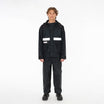



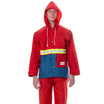


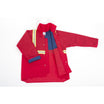

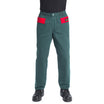



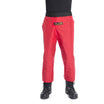






Leave a comment
This site is protected by hCaptcha and the hCaptcha Privacy Policy and Terms of Service apply.